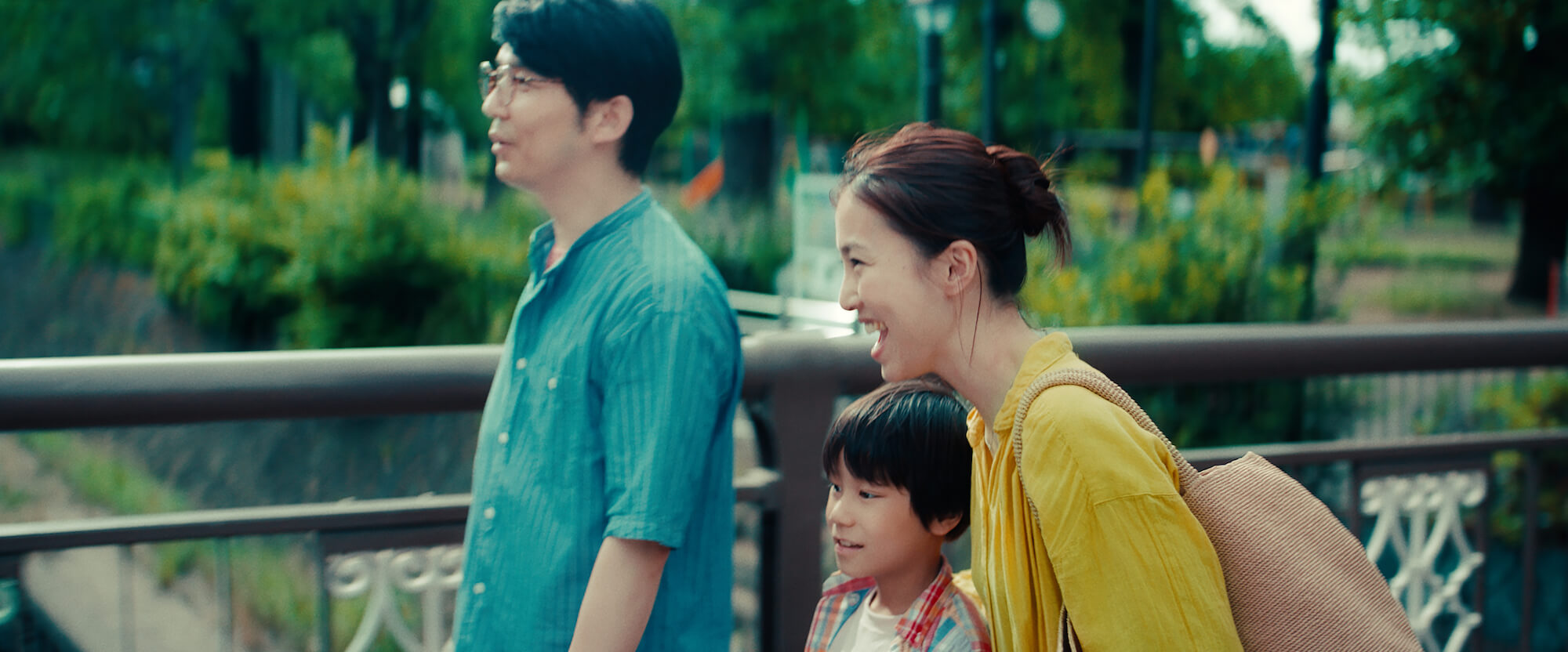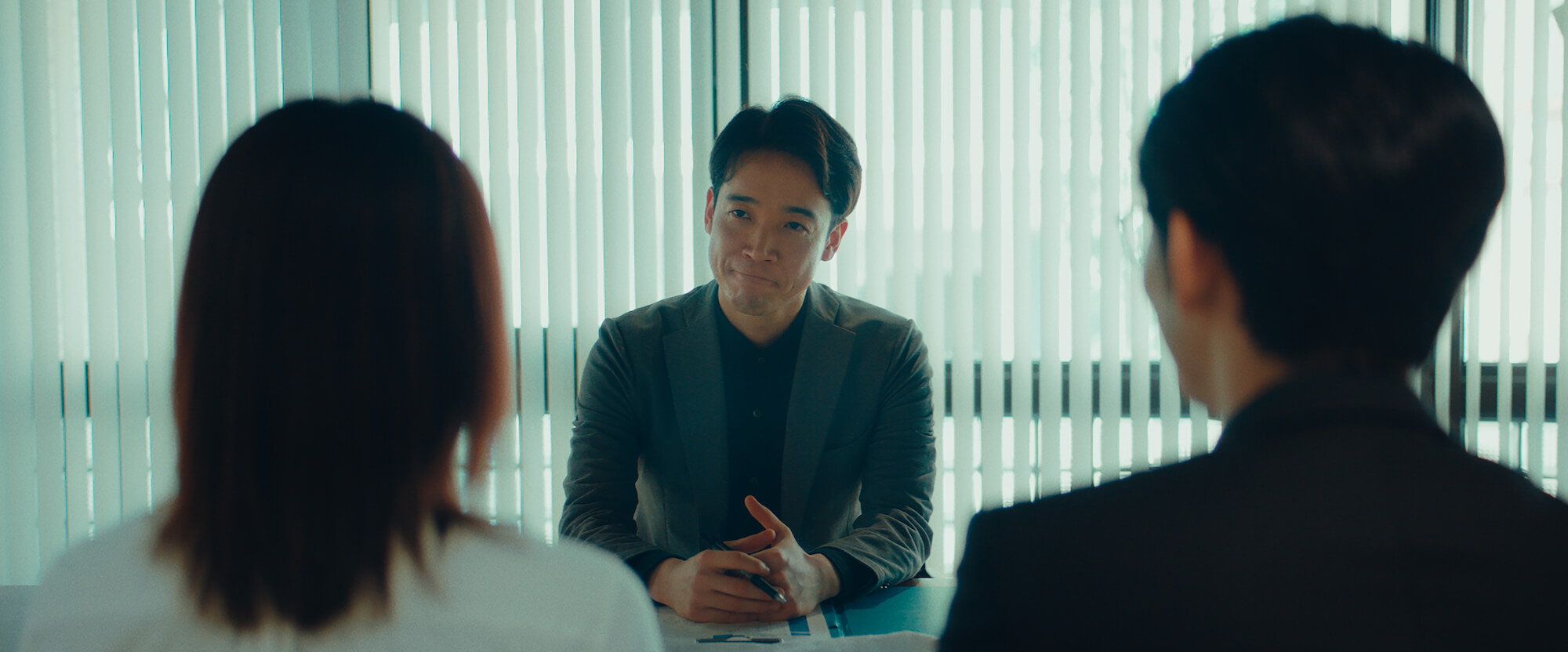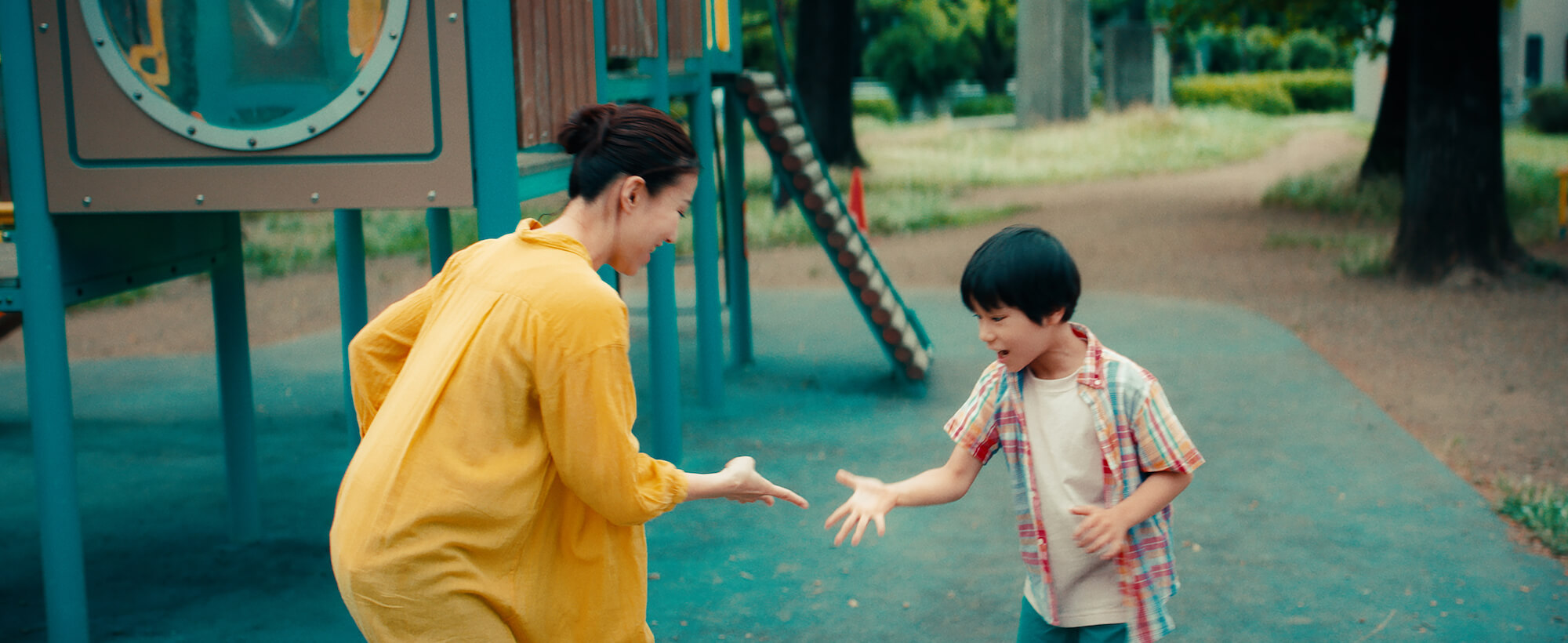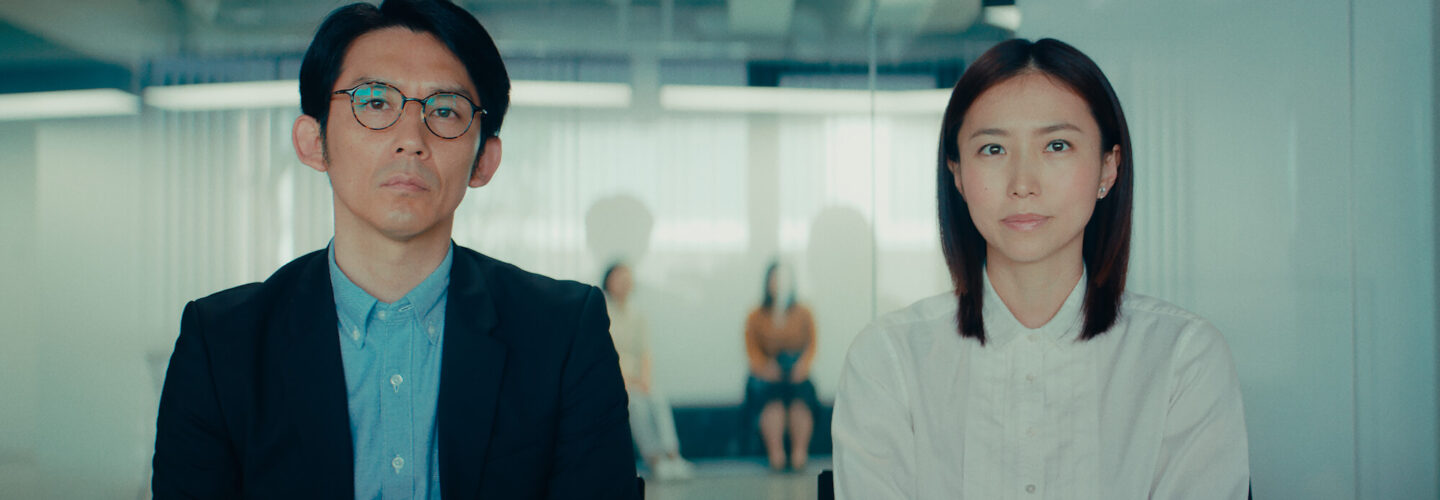
Son of Memory, Hayato Ando’s latest sci-fi drama, is a short film which posits philosophical and moral questions. What would you do if you were given the chance to briefly experience the presence of a deceased loved one again? Would you savour more days with a representation of that person or would it further embellish the suffering of their absence? Ando’s short centres these questions around a grieving couple who have lost their young son. It’s a tragic yet thought-provoking film that sees the family debate the moral quandary at hand and is captured through beautiful, soft tones which evoke the deep and difficult nostalgia they face. DN caught up with Ando who broke down the concept of his short, the cultural meaning behind the period of 49 days used in the film, and the process of how he came to visually represent the digitally-recreated loved ones.
I’m curious to know where the idea for Son of Memory’s concept came from?
When I saw Terminator 2 as a child, CG fascinated me and gave me a dream. Somehow, I also wanted to fascinate people with CG, and fortunately, I am now working as a film director. CG technology has continued to develop, and now it’s hard to tell the difference between real and CG. I thought CG being realistic brings entertainment to the film. In 2012, when I saw 2PAC’s holographic performance at Coachella Festival on the news, I felt something tugging at my heart. The audience was excited that he had come back to life, and I was amazed to see how CG could even create life, if only for a moment. On the other hand, I wondered how the bereaved family of 2PAC felt when they saw this technology, despite the excitement of the audience.
Nowadays, with the evolution of technology, it is becoming possible to recreate the deceased. In movies, the deceased are reconstructed using computer graphics and projected on the screen as if they were still alive. We are amazed and even moved by this technology. Currently, this technology is being used for great entertainment. But in the future, when this technology becomes widespread and everyone can use it, we will feel more than just surprise. We will be able to restore our own families and loved ones. What if such technology could be used in every household? What if technology evolves to the point where we can recreate the dead and communicate with them? Would you be hesitant to use such technology? Is there love in it? What would we do with that technology in the future as humans evolve digitally? I made this film to depict the conflicts that we may face in the future as digital technology evolves.

How challenging was it to write a script as philosophically complex as Son of Memory?
I needed to think about the situations in the movie and what I would really feel like using the ’49 days’ service. For me, it is my beloved ones, my children. They are very dear to me, but it was very hard for me to think about a situation when they would be gone. I thought that perhaps for many people, the setting of losing a child might not be something they would even want to see. I thought that by depicting the death of a beloved, I could express the ‘life’ that can be seen through it.
How did you arrive at the period of 49 days for the length of time humans get to spend with their deceased?
In the film, the idea of the ’49 days’ (shijūku-nichi) is presented. This idea has a special significance for Japanese people. It refers to the Buddhist service where, following the funeral, the ashes of the deceased will be kept for 49 days at home instead of immediately being put away in the tomb. In Japan, the spirit of the deceased is believed to remain in this world during those 49 days. The period is meant for the spirit to find peace with itself, while the remaining family members remember the deceased as they live alongside them. I also feel that the period of 49 days is meant for those that have been left behind to come to terms with the fact of their having lost a loved one. Once the ashes have been placed in the tomb, the deceased no longer exists in this world. Given such beliefs and rituals in Japan, I believe such service as the one depicted in this film may appear one day.
I made this film to depict the conflicts that we may face in the future as digital technology evolves.
It is also inspired by Indonesian Torajan rituals. To Torajans, the death of a loved one is not final and death itself is viewed as the single most important event of the life cycle. When a Torajan dies, the deceased is embalmed and placed at home. They are not considered ‘dead’ until a funeral takes place, which could be months or years later. In the interim, they are deemed as ‘sick’ and household members tend to them round the clock with food and beverages. They are treated as a guest and it is not uncommon to have more than one sitting around in the home.


What inspired you to present this near future story through the eyes of two grieving parents?
The concept of this film is to live for the moment. Behind this concept is a regret I have as a father. One day, when my wife and I were out shopping, our younger son begged to be carried. I was very tired at the time, so I refused to carry him and said, “Let’s walk together” Then my wife, who was standing next to me said “Why don’t you carry him? Next year he’ll be big and he won’t be asking to be carried.” My wife is a woman who cherishes the moment. Next year, I might not be able to carry him anymore. When I thought about this, I realized that I was losing touch with my children. Time is not coming back. When I realized that, I made up my mind to face more in front of me.
The parents’ reactions in Son of Memory are very different, was it important for you to have people who shared different/opposing views on this concept?
Yes, it was very important. In fact, some people say that using computer graphics to bring the deceased back to life is “blasphemy against the dead”. I’m sure there are people who would use the ’49 days’ service and people who would not use it. There are those who are concerned about the eyes of those around them, those who still want to use it, and those who will never use it. I myself have no intention of affirming or denying those who would want to use this service. I just feel that the love and emotion of a mother who decides to use this service are beautiful and powerful, and I tried to capture that in the film.

When it came to presenting the digitally-recreated son, what made you decide on the technology on the surface of his neck?
I’m sure that if the service is to restore the deceased, the android should be as free of machine-like elements as possible. But I felt that there needed to be some visual element that would make people think that he was digital in the film. I thought a lot about where the technology should be, and I thought about what it would be like to be confronted by an android.
The more natural it is, the more the audience feels as if the person is alive. I thought it should be the same with this film.
I thought it would be good to have a place where you can’t see the buttons when you are talking. I thought it would not be good for the bereaved to be able to see the button whilst they’re talking. So, I thought it would be better to have it behind the android and at the back of the neck rather than the back.
Similarly, how did you want him to act? Was it important to you that his performance was natural?
I asked him to act as if he was always playing. It’s very important to be natural. The original plan was to do some CG work on the back of his neck. The more natural his performance is, the more poignant the story will be. This is also a metaphor in a way. CG is becoming more and more realistic and natural in Hollywood movies today. The more natural it is, the more realistic the film becomes. In other words, the more natural it is, the more the audience feels as if the person is alive. I thought it should be the same with this film.


How long did it take to shoot Son of Memory and what camera did you use and why?
It took two days. I wanted to take beautiful pictures with soft tones, so I consulted with our DoP and decided on the Alexa mini.
What will you be working on next?
At the moment, I’m busy making commercials and music videos for my job, but in a few years, I’d like to turn this short film into a feature film.


